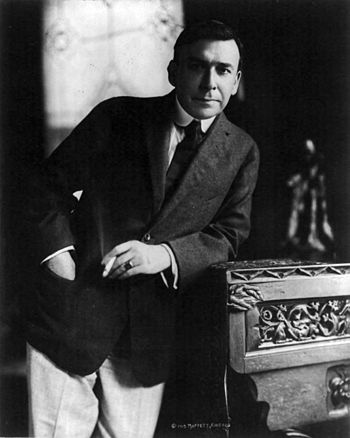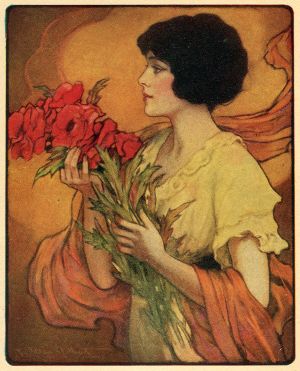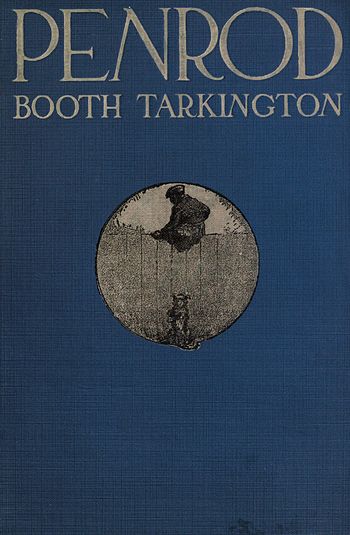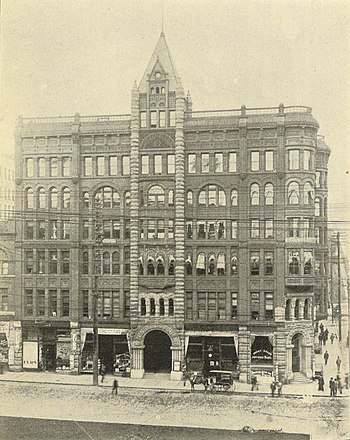 |
| Yesler's post-fire Pioneer Building, depicted here in 1900. (Photo credit: Wikipedia) |
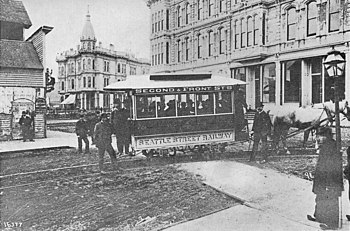 |
| Horse-drawn streetcar at what is now the corner of Occidental and Yesler, 1884 (Photo credit: Wikipedia) |
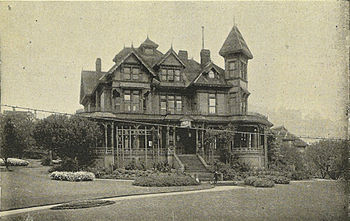 |
| "The Public Library Building. / The property belongs to the Yesler Estate, Incorporated," from brochure Seattle and the Orient (1900).This library, the former Henry Yesler home at Third and James, burned soon after this picture was taken, on January 2, 1901. It was replaced by a Carnegie library. (Photo credit: Wikipedia) |
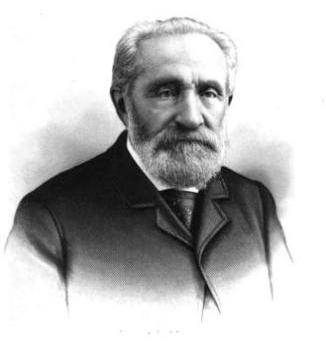 |
| Seattle, Washington pioneer and mill owner Henry Yesler; also 2-time mayor of Seattle (Photo credit: Wikipedia) |
My interest in the Yesler family was sparked by accident. I
was doing research in to the family of my great Grandfather David Burgert and
came across this information about the family of Sarah Burgert Yesler his
second daughter. She was the wife of Henry Yesler one of the founding fathers
of Seattle .
Henry Yesler is a man considered to be an economic founding
father in Seattle and one of their first
millionaires. Henry had headed west in 1849 like many men to find gold . He
arrived in Seattle Washington Yesler Way . This
area was called ‘Skid Road”, not because of poverty but because of the logs
skidded down the embankment towards the mill.
The Yesler family built what was a rather large house at the
time on the 1st Avenue
and James Street . It was said to resemble a store. It was not
the typical dwelling of your successful Victorian entrepreneur. He waited after
the death of his first wife Sarah Burger Yesler to build his Victorian mansion
on the between 3rd and 4th St
Henry Yesler also built the city’s first water
system in 1854. The original system was described as a series of V shaped open
air flumes that were mounted on First Hill and ran past the mill. This system
only provided what was dirty water to the town’s people. He later made
improvements using log pipes that they buried beneath the ground.
Henry Yesler had a sense of public duty and in his lifetime
in Seattle he served
as a county auditor, county commissioner, and mayor.
On June 6th I889 the Great Seattle fire burned the wooden
buildings in the old business district. It also destroyed his steam powered
mill. The home of his 1st wife which had
become known as Yesler Hall was also destroyed. Yesler instead built the
Pioneer building where his first home had stood. Yesler died December 16th
1892. His mansion becomes the first Seattle Public Library but it too burned
down in 1901.
Sarah Burgert Yesler arrived in Seattle mid summer of 1858. She had come to
help her husband with the sawmill and other business enterprises. Sarah Yesler
became the first lady of Seattle
in her many years there. She was an active in the suffrage movement and worked
to establish a free public library system.
Sarah had been separated from her husband for seven years
while he had gone out west in search of gold. She stayed with relatives and
raised their only child George. When she felt George was old enough to fare
well without her, she undertook the dangerous journey west. Unfortunately, her
son George succumbed to a local pestilence and died in 1859 while his parents
were establishing themselves in Seattle .
She spent many years there engaged in making the family
business a success. She did not use financial success to become a Victorian
lady of leisure. Sara’s first job was a cook for the saw mill employees. She spent her later years involved in the
Seattle Library association and many other benevolent ventures to benefit the
youth of Seattle .
The Yeslers were not your typical Victorian upper class
couples. They did not attend church. They instead hosted the famous
Spiritualist W.E. Cheney at their home. They were followers of the concept of
free love. They may have been somewhat influenced by relatives by marriage who
had been involved in the religious cult that had established themselves in Oneida New York Seattle .
Sarah was known for a particular act of kindness towards a
Chinese cook before her death in 1887. The Yellers would not take part in the
anti Chinese riots that occurred in Seattle
in the early 1880’s, she took in a Chinese cook and refused to hand him over to
an irate group of white men. This kind of action was not something that would father
her husband’s political career. Sara was aware that a great many orphans were
part of the Seattle
area. She helps found the Seattle Children’s home in 1885 2with the work of the
Ladies Relief Society. She died of gastric disease in 1887 at age 65.
"As the news [of her death] swept across Seattle , flags in the
city and its harbor were lowered to half-mast as citizens mourned the woman who
had given so much to them. Stores and businesses closed their doors out of
respect for 'the aged lady' and hundreds poured through the doors of the Yesler
mansion and into its north parlor..." (p. 176).
Sources:
Linda Peavey and Ursula Smith, "Sarah Burgert Yesler" in Women in Waiting in the Westward Movement (Norman: University of Oklahoma Press, 1994), 132-178.
Linda Peavey and Ursula Smith, "Sarah Burgert Yesler" in Women in Waiting in the Westward Movement (Norman: University of Oklahoma Press, 1994), 132-178.
Julia Yesler
On June 12, 1855, a
daughter Henry Yesler was born. Julia
(Benson) Intermela (1855-1907) is the child of Susan, the daughter of Curly
(Su-quardle) and Henry Yesler. After the death of her mother she was taken in
and raised by his wife Sarah Yesler. Julia married Charles L. Intermela in
1880 Elsie was born on January 14, 1892,
The following quote was found in reference to Julia Yesler.
. “He was not married to the Indian woman but when his wife came he did not do
like many others, drive the girl back to her tribe. He provided for the Indian
woman and looked out for her welfare and for that of his daughter by her. He
gave the daughter as good an education as circumstances would permit. I had the
pleasure of meeting the daughter about two years ago. She is married to a very
nice gentleman who is one of the foremost citizens in the city and county where
they live. She is a perfect lady and is respected by all who know her. Mrs.
Yesler, when she came and found Mr. Yesler the father of the little daughter,
took the little one to her home and treated her as her own child" ("A
Story of Pioneering,")
SOURCEA Story of Pioneering by Nicholas V. Sheffer (1825-1910)
It should be noted that not everyone approved of the Yesler
family. Many people were shocked at their lack of concern for Victorian
standards of sexuality. Henry Yesler also had a habit of getting involved in a
number of frivolous law suits. He also was known as a bit of a tight wad. He
was slow to repay loans made to family members in Ohio , even after he became a millionaire.
Historical Material is available on the Yesler family at http://www.historylink.org Other
Material referenced in text.















